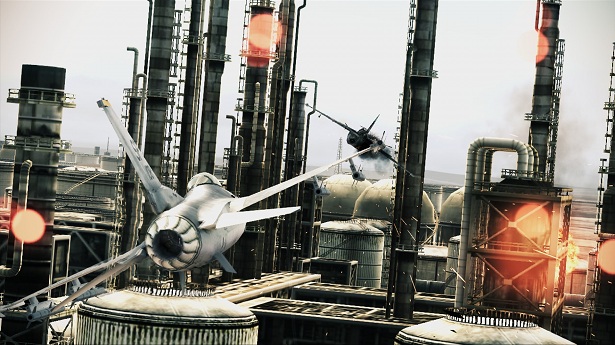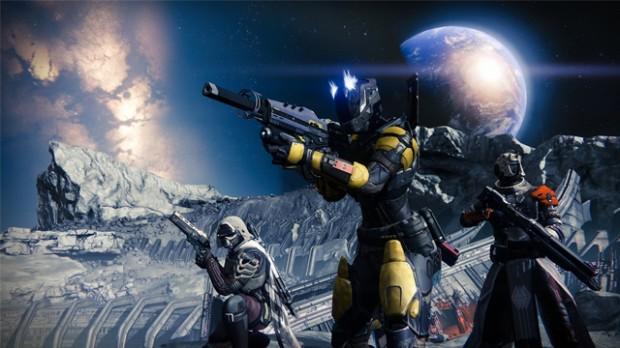

Ever since the booming days of the Nintendo 64, Mario and his friends have been hosting the wildest of parties. While they haven’t always been the ragers that his first few outings were, the simple joys of moving pieces around a board and participating in all sorts of zany minigames has permeated each of the Mario Party series’ titles. While the latest iteration – Mario Party 10 – is no different in including these series pillars, it also represents a need for evolution.
At its core, Mario Party 10 has all the trappings of a classic Mario adventure. Familiar characters? Check. A bright and colorful world? Check. More minigames than you can shake a Goomba at? Check. Beneath this surface glance, though, half-measures and questionable design decisions mar what could have been the most interesting Mario Party title in quite a while.
Mario’s latest party-based excursion is split between three main modes of play. The series’ traditional party mode exists under the Mario Party heading and finds players confined to a vehicle as they travel around the chosen board together, individually collecting mini stars in hopes of coming out on top and winning the coveted gold star. The approach is similar to Mario Party 9 and sadly serves to dilute the winning formula that the series was founded upon.
In practice, the act of tying players to a single moving vehicle serves to eliminate much of the strategy that was once involved in the series. There’s still a degree of skulduggery possible in planning where to end each player’s respective turn, but it pales in comparison to plotting a full-on adventure around Mario Party‘s previously sprawling boards. This time around, the boards are particularly linear save for the odd opportunity to choose between two temporarily diverging paths.
Following Mario Party 10‘s attempt at a series staple, the game also makes use of a new series of Amiibo to power Amiibo Party. In this mode, players use their Amiibo (including the limited edition gold Mario) as pieces on a game board that follows classic Mario Party rules. There’s a pleasingly tangible feeling to the whole experience, as dice rolling around the screen are prone to knocking down parts of the board that magically right themselves. It’s a small touch that is sure to evoke more than a few smiles, but it simply isn’t enough to make up for the mode’s shallow gameplay.
The available boards all share the same square shape and are noticeably tiny. While it’s encouraging to see the series making a return to form with traditional Mario Party gameplay, the simplistic game boards do little to motivate subsequent playthroughs. The notion of swapping out corners of the board to match the different characters’ themes is an interesting one, but amounts to little more than a palette change when each of the boards follow the same linear route structure.
The final and most promising of Mario Party 10‘s main modes is Bowser Party. In this, four players ride in a communal vehicle and take turns rolling dice to get as far across the linear game board as they can. At the end of their turns, Bowser – controlled by a fifth player with the gamepad – steps up to the plate to roll four or more dice in an attempt to catch up to them and initiate one of the game’s four-against-one minigames.
As a whole, Bowser Party is the most refreshing change that the Mario Party series has seen in a long time. The majority of the minigames are a joy to play and the team dynamic would have acted as the perfect companion piece for classic Mario Party sensibilities. It’s unfortunate then, that there simply aren’t enough minigames exclusive to this mode. After one short jaunt through the mode, most players will have played through the extent of Bowser Party’s offerings. While they certainly stand up well to replayability, there simply aren’t enough on offer.
Outside of Bowser Party though, the game is populated with the expected assortment of 4v4, 3v1, 2v2 and boss battle minigames. Aside from a few duds, these minigames continue the trend of being Mario Party‘s strong point. At times, it can feel as though the different modes are simply hurdles that must be overcome in order to reach minigame nirvana. As has become the trend with recent iterations of the series, the minigames – particularly the boss offerings – represent the primary reason to come back to the game when everything is said and done.
In addition to these three main modes, there are an assortment of extended minigames and tournaments that can help to extend your stay with Mario and company. Outside of the surprisingly engrossing Jewel Drop (think Dr. Mario with real-world physics), these amount to little more than side attractions. Coupled with an in-game shop for buying additional characters and cosmetic items, players will regularly find themselves turning back to the game’s diverse array of minigames for entertainment.
In this way, Mario Party 10 is a difficult game to position. It contains the charm and strong mix of minigames that fans have come to expect, but much of the game seems stripped down in order to facilitate ease of play. As a result, it feels like Mario Party 10 loses part of the strategy that helped to tie the board game aesthetic together. Mario Party 10 shows potential with its inclusion of the entertaining Bowser Party mode but in the end, the experience comes across feeling anemic in the areas that initially acted as the series’ foundation.
Will you be picking up the latest iteration of the Mario Party series? What changes would you like to see the series go through for its next offering?
Mario Party 10 is available now for the Wii U. Game Rant was provided a physical copy of the game for this review.




 So, You Have a New Idea: Now What?
So, You Have a New Idea: Now What? Just Cause 3 - How to Unlock Fast Travel
Just Cause 3 - How to Unlock Fast Travel Comprehensive Destiny PS4/PS3 Tips & Tricks For Gameplay, Weapons, Achievements, Raids And Crucibles
Comprehensive Destiny PS4/PS3 Tips & Tricks For Gameplay, Weapons, Achievements, Raids And Crucibles 6 Online Security Tips for Travelers and Road Warriors
6 Online Security Tips for Travelers and Road Warriors Halo 4: Spartan Ops Guide
Halo 4: Spartan Ops Guide